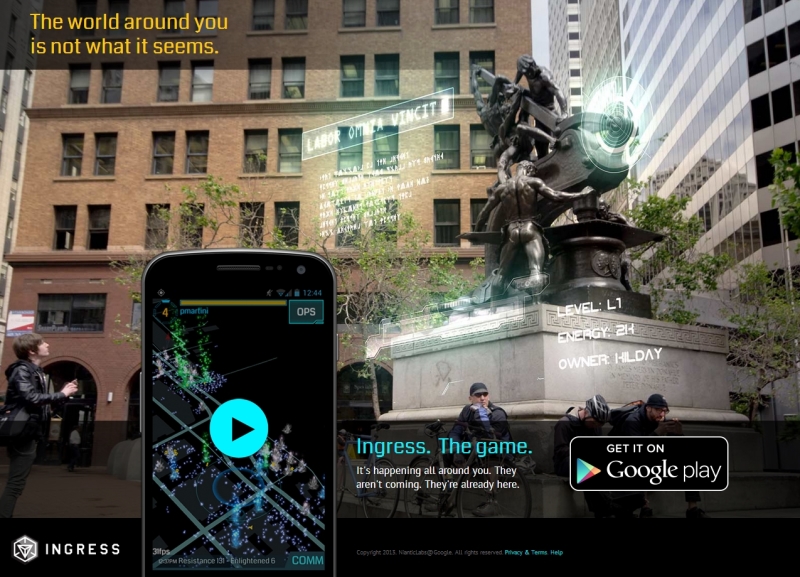Location-based mixed-reality games (also referred to as pervasive games) are worth dedicating at least a chapter to, if not a whole book. It is a new and now massively popular class of online entertainment. The concept is simple. Some objectives, events, or items in a game are connected to specific GPS coordinates on a real map. Usually, such a marker is attached to a city or natural landmark in a game to better express it. The introduction of such games was only a matter of time, since they act as handy virtual maps and reliable algorithms of navigation. Sooner or later, it was obvious that developers would implement this in a game.
The general feature of location-based games is the real-world map scaled down for gaming—the story takes place in the physical world; as once stated by one of the characters from Lewis Carroll's books, "We now use the country itself, as its own map". Quests are set in real city streets so players have to step outside their comfort zones by virtually leaving their homes, using their cars or public transportation, and walking on foot to reach the reference points on a map. At specified locations, they must execute some virtual missions such as shooting a virtual antagonist, marking a place, picking up an item for bonus points or special hints, and so on. As a rule, some multiplayer aspects are involved in gameplay. The players can share information, set traps, fight for virtual territories, and so on. It is a truly adventurous experience, usually with some RPG functionality to motivate players more. Sometimes a time limit is involved so players are challenged to finish several game tasks in a predetermined time period. The scale of a game is big, so game matches can last a pretty long time, for example, 30 minutes, 45 minutes, 1 hour, and so on.
Common themes in location-based games are various types of otherworldly and ghoulish mysteries, paraboloidal espionage stories about conspiracy, magical-fantasy challenges, aliens living among us, and so on.

A screenshot of Ingress' official website
A game world can be additionaly supported by other types of media, being much larger than a simple virtual map on the screen. For instance, some portion of narrative can be provided to players via special books, fake piece of advetising, fake articles, and websites which were created by game developers. Because of such element, the game's pervasion in real world is much wider and deeper. The games with such components are known as alternate-reality games.
A notable example is a game that can be considered a world-phenomena—Ingress, created by Niantic Labs (http://www.ingress.com/). Originally, it was Android exclusive, but there are some plans to port it onto iOS as well. Players have to interact with so-called portals attached to public places, which can be built, hacked, upgraded via special mods, attacked, defended, and so on. There are two factions—the enlightened and the resistance—that fight for those portals, since there is a balance of confrontational forces in the game. Players have to use their virtual mobile devices on virtual streets to locate nearby portals, and a special locator provides directions.
The tricky part of developing location-based games is pretty obvious—the lack of universality. Games set in large cities may have better quality game environments as there can be a larger number of markers, a bigger list of challenges, and so on. Smaller towns get less attention from developers because they simply don't have enough time and people to cover all the possible locations. Automatic solutions are not an option since they may accidentally establish reference points at unreadable places, for example, over a water surface, on a roof, and so on. Some human testing and checking of the physical location is always needed to exclude any inaccuracies. The best way is to develop a product that is so attractive that a lot of volunteers will appear and submit candidates for landmarks at the locations where the game will be set. There is also a funny issue caused by such games—players use a real environment and try to interact with it, despite the fact that they might look like tourists taking photo of landmarks. Sometimes, the wider public can get a little bit confused by such strange activities: wondering "Why are so many people running around a statue, staring at their phones?"
